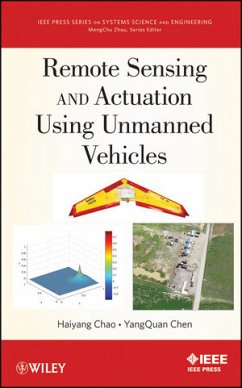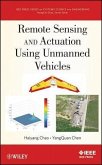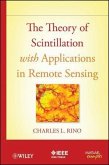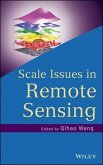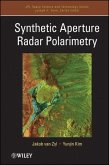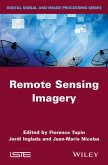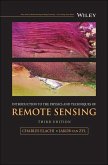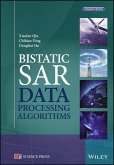98,99 €
98,99 €
inkl. MwSt.
Sofort per Download lieferbar

0 °P sammeln
98,99 €
Als Download kaufen

98,99 €
inkl. MwSt.
Sofort per Download lieferbar

0 °P sammeln
Jetzt verschenken
Alle Infos zum eBook verschenken
98,99 €
inkl. MwSt.
Sofort per Download lieferbar
Alle Infos zum eBook verschenken

0 °P sammeln
- Format: ePub
- Merkliste
- Auf die Merkliste
- Bewerten Bewerten
- Teilen
- Produkt teilen
- Produkterinnerung
- Produkterinnerung

Bitte loggen Sie sich zunächst in Ihr Kundenkonto ein oder registrieren Sie sich bei
bücher.de, um das eBook-Abo tolino select nutzen zu können.
Hier können Sie sich einloggen
Hier können Sie sich einloggen
Sie sind bereits eingeloggt. Klicken Sie auf 2. tolino select Abo, um fortzufahren.

Bitte loggen Sie sich zunächst in Ihr Kundenkonto ein oder registrieren Sie sich bei bücher.de, um das eBook-Abo tolino select nutzen zu können.
Unmanned systems and robotics technologies have become very popular recently owing to their ability to replace human beings in dangerous, tedious, or repetitious jobs. This book fill the gap in the field between research and real-world applications, providing scientists and engineers with essential information on how to design and employ networked unmanned vehicles for remote sensing and distributed control purposes. Target scenarios include environmental or agricultural applications such as river/reservoir surveillance, wind profiling measurement, and monitoring/control of chemical leaks.
- Geräte: eReader
- ohne Kopierschutz
- eBook Hilfe
Andere Kunden interessierten sich auch für
![Remote Sensing and Actuation Using Unmanned Vehicles (eBook, PDF) Remote Sensing and Actuation Using Unmanned Vehicles (eBook, PDF)]() Haiyang ChaoRemote Sensing and Actuation Using Unmanned Vehicles (eBook, PDF)98,99 €
Haiyang ChaoRemote Sensing and Actuation Using Unmanned Vehicles (eBook, PDF)98,99 €![The Theory of Scintillation with Applications in Remote Sensing (eBook, ePUB) The Theory of Scintillation with Applications in Remote Sensing (eBook, ePUB)]() Charles RinoThe Theory of Scintillation with Applications in Remote Sensing (eBook, ePUB)107,99 €
Charles RinoThe Theory of Scintillation with Applications in Remote Sensing (eBook, ePUB)107,99 €![Scale Issues in Remote Sensing (eBook, ePUB) Scale Issues in Remote Sensing (eBook, ePUB)]() Qihao WengScale Issues in Remote Sensing (eBook, ePUB)123,99 €
Qihao WengScale Issues in Remote Sensing (eBook, ePUB)123,99 €![Synthetic Aperture Radar Polarimetry (eBook, ePUB) Synthetic Aperture Radar Polarimetry (eBook, ePUB)]() Jakob J. van ZylSynthetic Aperture Radar Polarimetry (eBook, ePUB)124,99 €
Jakob J. van ZylSynthetic Aperture Radar Polarimetry (eBook, ePUB)124,99 €![Remote Sensing Imagery (eBook, ePUB) Remote Sensing Imagery (eBook, ePUB)]() Remote Sensing Imagery (eBook, ePUB)144,99 €
Remote Sensing Imagery (eBook, ePUB)144,99 €![Introduction to the Physics and Techniques of Remote Sensing (eBook, ePUB) Introduction to the Physics and Techniques of Remote Sensing (eBook, ePUB)]() Charles ElachiIntroduction to the Physics and Techniques of Remote Sensing (eBook, ePUB)130,99 €
Charles ElachiIntroduction to the Physics and Techniques of Remote Sensing (eBook, ePUB)130,99 €![Bistatic SAR Data Processing Algorithms (eBook, ePUB) Bistatic SAR Data Processing Algorithms (eBook, ePUB)]() Xiaolan QiuBistatic SAR Data Processing Algorithms (eBook, ePUB)128,99 €
Xiaolan QiuBistatic SAR Data Processing Algorithms (eBook, ePUB)128,99 €-
-
-
Unmanned systems and robotics technologies have become very popular recently owing to their ability to replace human beings in dangerous, tedious, or repetitious jobs. This book fill the gap in the field between research and real-world applications, providing scientists and engineers with essential information on how to design and employ networked unmanned vehicles for remote sensing and distributed control purposes. Target scenarios include environmental or agricultural applications such as river/reservoir surveillance, wind profiling measurement, and monitoring/control of chemical leaks.
Dieser Download kann aus rechtlichen Gründen nur mit Rechnungsadresse in D ausgeliefert werden.
Produktdetails
- Produktdetails
- Verlag: Wiley-IEEE Press
- Erscheinungstermin: 4. September 2012
- Englisch
- ISBN-13: 9781118377161
- Artikelnr.: 37353188
- Verlag: Wiley-IEEE Press
- Erscheinungstermin: 4. September 2012
- Englisch
- ISBN-13: 9781118377161
- Artikelnr.: 37353188
- Herstellerkennzeichnung Die Herstellerinformationen sind derzeit nicht verfügbar.
HAIYANG CHAO, PhD, is a postdoctoral fellow in the Department of Mechanical and Aerospace Engineering at West Virginia University in Morgantown. He authored or coauthored more than twenty peer-reviewed research papers and is one of the key developers of AggieAir, a low-cost, small UAV platform for remote sensing applications.
YANGQUAN CHEN, PhD, is Associate Professor of Electrical and Computer Engineering at Utah State University in Logan. He holds fourteen U.S. patents and is the author of several research monographs and edited volumes, five textbooks, and over 500 peer-reviewed research papers.
YANGQUAN CHEN, PhD, is Associate Professor of Electrical and Computer Engineering at Utah State University in Logan. He holds fourteen U.S. patents and is the author of several research monographs and edited volumes, five textbooks, and over 500 peer-reviewed research papers.
List of Figures xv
List of Tables xix
Foreword xxi
Preface xxiii
Acknowledgments xxv
Acronyms xxvii
1 Introduction 1
1.1 Monograph Roadmap 1
1.1.1 Sensing and Control in the Information-Rich World 1
1.1.2 Typical Civilian Application Scenarios 3
1.1.3 Challenges in Sensing and Control Using Unmanned Vehicles 5
1.2 Research Motivations 7
1.2.1 Small Unmanned Aircraft System Design for Remote Sensing 7
1.2.2 State Estimation for Small UAVs 8
1.2.3 Advanced Flight Control for Small UAVs 9
1.2.4 Cooperative Remote Sensing Using Multiple UAVs 10
1.2.5 Diffusion Control Using Mobile Actuator and Sensor Networks 11
1.3 Monograph Contributions 11
1.4 Monograph Organization 12
References 12
2 AggieAir: A Low-Cost Unmanned Aircraft System for Remote Sensing 15
2.1 Introduction 15
2.2 Small UAS Overview 17
2.2.1 Autopilot Hardware 19
2.2.2 Autopilot Software 21
2.2.3 Typical Autopilots for Small UAVs 22
2.3 AggieAir UAS Platform 26
2.3.1 Remote Sensing Requirements 26
2.3.2 AggieAir System Structure 27
2.3.3 Flying-Wing Airframe 30
2.3.4 OSAM-Paparazzi Autopilot 31
2.3.5 OSAM Image Payload Subsystem 32
2.3.6 gRAID Image Georeference Subsystem 36
2.4 OSAM-Paparazzi Interface Design for IMU Integration 39
2.4.1 Hardware Interface Connections 40
2.4.2 Software Interface Design 41
2.5 AggieAir UAS Test Protocol and Tuning 45
2.5.1 AggieAir UAS Test Protocol 45
2.5.2 AggieAir Controller Tuning Procedure 46
2.6 Typical Platforms and Flight Test Results 47
2.6.1 Typical Platforms 47
2.6.2 Flight Test Results 48
2.7 Chapter Summary 50
References 50
3 Attitude Estimation Using Low-Cost IMUs for Small Unmanned Aerial
Vehicles 53
3.1 State Estimation Problem Definition 54
3.2 Rigid Body Rotations Basics 55
3.2.1 Frame Definition 55
3.2.2 Rotation Representations 56
3.2.3 Conversion Between Rotation Representations 57
3.2.4 UAV Kinematics 58
3.3 Low-Cost Inertial Measurement Units: Hardware and Sensor Suites 60
3.3.1 IMU Basics and Notations 60
3.3.2 Sensor Packs 61
3.3.3 IMU Categories 63
3.3.4 Example Low-Cost IMUs 63
3.4 Attitude Estimation Using Complementary Filters on SO(3) 65
3.4.1 Passive Complementary Filter 66
3.4.2 Explicit Complementary Filter 66
3.4.3 Flight Test Results 67
3.5 Attitude Estimation Using Extended Kalman Filters 68
3.5.1 General Extended Kalman Filter 68
3.5.2 Quaternion-Based Extended Kalman Filter 69
3.5.3 Euler Angles-Based Extended Kalman Filter 69
3.6 AggieEKF: GPS-Aided Extended Kalman Filter 70
3.7 Chapter Summary 74
References 74
4 Lateral Channel Fractional Order Flight Controller Design for a Small UAV
77
4.1 Introduction 77
4.2 Preliminaries of UAV Flight Control 78
4.3 Roll-Channel System Identification and Control 79
4.3.1 System Model 80
4.3.2 Excitation Signal for System Identification 80
4.3.3 Parameter Optimization 81
4.4 Fractional Order Controller Design 81
4.4.1 Fractional Order Operators 81
4.4.2 PI¿ Controller Design 82
4.4.3 Fractional Order Controller Implementation 85
4.5 Simulation Results 86
4.5.1 Introduction to Aerosim Simulation Platform 87
4.5.2 Roll-Channel System Identification 87
4.5.3 Fractional-Order PI Controller Design Procedure 89
4.5.4 Integer-Order PID Controller Design 90
4.5.5 Comparison 90
4.6 UAV Flight Testing Results 92
4.6.1 The ChangE UAV Platform 92
4.6.2 System Identification 94
4.6.3 Proportional Controller and Integer Order PI Controller Design 96
4.6.4 Fractional Order PI Controller Design 97
4.6.5 Flight Test Results 98
4.7 Chapter Summary 99
References 99
5 Remote Sensing Using Single Unmanned Aerial Vehicle 101
5.1 Motivations for Remote Sensing 102
5.1.1 Water Management and Irrigation Control Requirements 102
5.1.2 Introduction of Remote Sensing 102
5.2 Remote Sensing Using Small UAVs 103
5.2.1 Coverage Control 103
5.2.2 Georeference Problem 105
5.3 Sample Applications for AggieAir UAS 109
5.3.1 Real-Time Surveillance 109
5.3.2 Farmland Coverage 109
5.3.3 Road Surveying 111
5.3.4 Water Area Coverage 112
5.3.5 Riparian Surveillance 112
5.3.6 Remote Data Collection 115
5.3.7 Other Applications 116
5.4 Chapter Summary 119
References 119
6 Cooperative Remote Sensing Using Multiple Unmanned Vehicles 121
6.1 Consensus-Based Formation Control 122
6.1.1 Consensus Algorithms 122
6.1.2 Implementation of Consensus Algorithms 123
6.1.3 MASnet Hardware Platform 123
6.1.4 Experimental Results 125
6.2 Surface Wind Profile Measurement Using Multiple UAVs 129
6.2.1 Problem Definition: Wind Profile Measurement 131
6.2.2 Wind Profile Measurement Using UAVs 133
6.2.3 Wind Profile Measurement Using Multiple UAVs 135
6.2.4 Preliminary Simulation and Experimental Results 136
6.3 Chapter Summary 140
References 140
7 Diffusion Control Using Mobile Sensor and Actuator Networks 143
7.1 Motivation and Background 143
7.2 Mathematical Modeling and Problem Formulation 144
7.3 CVT-Based Dynamical Actuator Motion Scheduling Algorithm 146
7.3.1 Motion Planning for Actuators with the First-Order Dynamics 146
7.3.2 Motion Planning for Actuators with the Second-Order Dynamics 147
7.3.3 Neutralizing Control 147
7.4 Grouping Effect in CVT-Based Diffusion Control 147
7.4.1 Grouping for CVT-Based Diffusion Control 148
7.4.2 Diffusion Control Simulation with Different Group Sizes 148
7.4.3 Grouping Effect Summary 150
7.5 Information Consensus in CVT-Based Diffusion Control 154
7.5.1 Basic Consensus Algorithm 154
7.5.2 Requirements of Diffusion Control 154
7.5.3 Consensus-Based CVT Algorithm 155
7.6 Simulation Results 158
7.7 Chapter Summary 164
References 164
8 Conclusions and Future Research Suggestions 167
8.1 Conclusions 167
8.2 Future Research Suggestions 168
8.2.1 VTOL UAS Design for Civilian Applications 168
8.2.2 Monitoring and Control of Fast-Evolving Processes 169
8.2.3 Other Future Research Suggestions 169
References 170
Appendix 171
A.1 List of Documents for CSOIS Flight Test Protocol 171
A.1.1 Sample CSOIS-OSAM Flight Test Request Form 171
A.1.2 Sample CSOIS-OSAM 48 in. UAV (IR) In-lab Inspection Form 172
A.1.3 Sample Preflight Checklist 172
A.2 IMU/GPS Serial Communication Protocols 173
A.2.1 u-blox GPS Serial Protocol 173
A.2.2 Crossbow MNAV IMU Serial Protocol 173
A.2.3 Microstrain GX2 IMU Serial Protocol 174
A.2.4 Xsens Mti-g IMU Serial Protocol 178
A.3 Paparazzi Autopilot Software Architecture: A Modification Guide 182
A.3.1 Autopilot Software Structure 182
A.3.2 Airborne C Files 183
A.3.3 OSAM-Paparazzi Interface Implementation 184
A.3.4 Configuration XML Files 185
A.3.5 Roll-Channel Fractional Order Controller Implementation 189
A.4 DiffMas2D Code Modification Guide 192
A.4.1 Files Description 192
A.4.2 Diffusion Animation Generation 193
A.4.3 Implementation of CVT-Consensus Algorithm 193
References 195
Topic Index 197
List of Tables xix
Foreword xxi
Preface xxiii
Acknowledgments xxv
Acronyms xxvii
1 Introduction 1
1.1 Monograph Roadmap 1
1.1.1 Sensing and Control in the Information-Rich World 1
1.1.2 Typical Civilian Application Scenarios 3
1.1.3 Challenges in Sensing and Control Using Unmanned Vehicles 5
1.2 Research Motivations 7
1.2.1 Small Unmanned Aircraft System Design for Remote Sensing 7
1.2.2 State Estimation for Small UAVs 8
1.2.3 Advanced Flight Control for Small UAVs 9
1.2.4 Cooperative Remote Sensing Using Multiple UAVs 10
1.2.5 Diffusion Control Using Mobile Actuator and Sensor Networks 11
1.3 Monograph Contributions 11
1.4 Monograph Organization 12
References 12
2 AggieAir: A Low-Cost Unmanned Aircraft System for Remote Sensing 15
2.1 Introduction 15
2.2 Small UAS Overview 17
2.2.1 Autopilot Hardware 19
2.2.2 Autopilot Software 21
2.2.3 Typical Autopilots for Small UAVs 22
2.3 AggieAir UAS Platform 26
2.3.1 Remote Sensing Requirements 26
2.3.2 AggieAir System Structure 27
2.3.3 Flying-Wing Airframe 30
2.3.4 OSAM-Paparazzi Autopilot 31
2.3.5 OSAM Image Payload Subsystem 32
2.3.6 gRAID Image Georeference Subsystem 36
2.4 OSAM-Paparazzi Interface Design for IMU Integration 39
2.4.1 Hardware Interface Connections 40
2.4.2 Software Interface Design 41
2.5 AggieAir UAS Test Protocol and Tuning 45
2.5.1 AggieAir UAS Test Protocol 45
2.5.2 AggieAir Controller Tuning Procedure 46
2.6 Typical Platforms and Flight Test Results 47
2.6.1 Typical Platforms 47
2.6.2 Flight Test Results 48
2.7 Chapter Summary 50
References 50
3 Attitude Estimation Using Low-Cost IMUs for Small Unmanned Aerial
Vehicles 53
3.1 State Estimation Problem Definition 54
3.2 Rigid Body Rotations Basics 55
3.2.1 Frame Definition 55
3.2.2 Rotation Representations 56
3.2.3 Conversion Between Rotation Representations 57
3.2.4 UAV Kinematics 58
3.3 Low-Cost Inertial Measurement Units: Hardware and Sensor Suites 60
3.3.1 IMU Basics and Notations 60
3.3.2 Sensor Packs 61
3.3.3 IMU Categories 63
3.3.4 Example Low-Cost IMUs 63
3.4 Attitude Estimation Using Complementary Filters on SO(3) 65
3.4.1 Passive Complementary Filter 66
3.4.2 Explicit Complementary Filter 66
3.4.3 Flight Test Results 67
3.5 Attitude Estimation Using Extended Kalman Filters 68
3.5.1 General Extended Kalman Filter 68
3.5.2 Quaternion-Based Extended Kalman Filter 69
3.5.3 Euler Angles-Based Extended Kalman Filter 69
3.6 AggieEKF: GPS-Aided Extended Kalman Filter 70
3.7 Chapter Summary 74
References 74
4 Lateral Channel Fractional Order Flight Controller Design for a Small UAV
77
4.1 Introduction 77
4.2 Preliminaries of UAV Flight Control 78
4.3 Roll-Channel System Identification and Control 79
4.3.1 System Model 80
4.3.2 Excitation Signal for System Identification 80
4.3.3 Parameter Optimization 81
4.4 Fractional Order Controller Design 81
4.4.1 Fractional Order Operators 81
4.4.2 PI¿ Controller Design 82
4.4.3 Fractional Order Controller Implementation 85
4.5 Simulation Results 86
4.5.1 Introduction to Aerosim Simulation Platform 87
4.5.2 Roll-Channel System Identification 87
4.5.3 Fractional-Order PI Controller Design Procedure 89
4.5.4 Integer-Order PID Controller Design 90
4.5.5 Comparison 90
4.6 UAV Flight Testing Results 92
4.6.1 The ChangE UAV Platform 92
4.6.2 System Identification 94
4.6.3 Proportional Controller and Integer Order PI Controller Design 96
4.6.4 Fractional Order PI Controller Design 97
4.6.5 Flight Test Results 98
4.7 Chapter Summary 99
References 99
5 Remote Sensing Using Single Unmanned Aerial Vehicle 101
5.1 Motivations for Remote Sensing 102
5.1.1 Water Management and Irrigation Control Requirements 102
5.1.2 Introduction of Remote Sensing 102
5.2 Remote Sensing Using Small UAVs 103
5.2.1 Coverage Control 103
5.2.2 Georeference Problem 105
5.3 Sample Applications for AggieAir UAS 109
5.3.1 Real-Time Surveillance 109
5.3.2 Farmland Coverage 109
5.3.3 Road Surveying 111
5.3.4 Water Area Coverage 112
5.3.5 Riparian Surveillance 112
5.3.6 Remote Data Collection 115
5.3.7 Other Applications 116
5.4 Chapter Summary 119
References 119
6 Cooperative Remote Sensing Using Multiple Unmanned Vehicles 121
6.1 Consensus-Based Formation Control 122
6.1.1 Consensus Algorithms 122
6.1.2 Implementation of Consensus Algorithms 123
6.1.3 MASnet Hardware Platform 123
6.1.4 Experimental Results 125
6.2 Surface Wind Profile Measurement Using Multiple UAVs 129
6.2.1 Problem Definition: Wind Profile Measurement 131
6.2.2 Wind Profile Measurement Using UAVs 133
6.2.3 Wind Profile Measurement Using Multiple UAVs 135
6.2.4 Preliminary Simulation and Experimental Results 136
6.3 Chapter Summary 140
References 140
7 Diffusion Control Using Mobile Sensor and Actuator Networks 143
7.1 Motivation and Background 143
7.2 Mathematical Modeling and Problem Formulation 144
7.3 CVT-Based Dynamical Actuator Motion Scheduling Algorithm 146
7.3.1 Motion Planning for Actuators with the First-Order Dynamics 146
7.3.2 Motion Planning for Actuators with the Second-Order Dynamics 147
7.3.3 Neutralizing Control 147
7.4 Grouping Effect in CVT-Based Diffusion Control 147
7.4.1 Grouping for CVT-Based Diffusion Control 148
7.4.2 Diffusion Control Simulation with Different Group Sizes 148
7.4.3 Grouping Effect Summary 150
7.5 Information Consensus in CVT-Based Diffusion Control 154
7.5.1 Basic Consensus Algorithm 154
7.5.2 Requirements of Diffusion Control 154
7.5.3 Consensus-Based CVT Algorithm 155
7.6 Simulation Results 158
7.7 Chapter Summary 164
References 164
8 Conclusions and Future Research Suggestions 167
8.1 Conclusions 167
8.2 Future Research Suggestions 168
8.2.1 VTOL UAS Design for Civilian Applications 168
8.2.2 Monitoring and Control of Fast-Evolving Processes 169
8.2.3 Other Future Research Suggestions 169
References 170
Appendix 171
A.1 List of Documents for CSOIS Flight Test Protocol 171
A.1.1 Sample CSOIS-OSAM Flight Test Request Form 171
A.1.2 Sample CSOIS-OSAM 48 in. UAV (IR) In-lab Inspection Form 172
A.1.3 Sample Preflight Checklist 172
A.2 IMU/GPS Serial Communication Protocols 173
A.2.1 u-blox GPS Serial Protocol 173
A.2.2 Crossbow MNAV IMU Serial Protocol 173
A.2.3 Microstrain GX2 IMU Serial Protocol 174
A.2.4 Xsens Mti-g IMU Serial Protocol 178
A.3 Paparazzi Autopilot Software Architecture: A Modification Guide 182
A.3.1 Autopilot Software Structure 182
A.3.2 Airborne C Files 183
A.3.3 OSAM-Paparazzi Interface Implementation 184
A.3.4 Configuration XML Files 185
A.3.5 Roll-Channel Fractional Order Controller Implementation 189
A.4 DiffMas2D Code Modification Guide 192
A.4.1 Files Description 192
A.4.2 Diffusion Animation Generation 193
A.4.3 Implementation of CVT-Consensus Algorithm 193
References 195
Topic Index 197
List of Figures xv
List of Tables xix
Foreword xxi
Preface xxiii
Acknowledgments xxv
Acronyms xxvii
1 Introduction 1
1.1 Monograph Roadmap 1
1.1.1 Sensing and Control in the Information-Rich World 1
1.1.2 Typical Civilian Application Scenarios 3
1.1.3 Challenges in Sensing and Control Using Unmanned Vehicles 5
1.2 Research Motivations 7
1.2.1 Small Unmanned Aircraft System Design for Remote Sensing 7
1.2.2 State Estimation for Small UAVs 8
1.2.3 Advanced Flight Control for Small UAVs 9
1.2.4 Cooperative Remote Sensing Using Multiple UAVs 10
1.2.5 Diffusion Control Using Mobile Actuator and Sensor Networks 11
1.3 Monograph Contributions 11
1.4 Monograph Organization 12
References 12
2 AggieAir: A Low-Cost Unmanned Aircraft System for Remote Sensing 15
2.1 Introduction 15
2.2 Small UAS Overview 17
2.2.1 Autopilot Hardware 19
2.2.2 Autopilot Software 21
2.2.3 Typical Autopilots for Small UAVs 22
2.3 AggieAir UAS Platform 26
2.3.1 Remote Sensing Requirements 26
2.3.2 AggieAir System Structure 27
2.3.3 Flying-Wing Airframe 30
2.3.4 OSAM-Paparazzi Autopilot 31
2.3.5 OSAM Image Payload Subsystem 32
2.3.6 gRAID Image Georeference Subsystem 36
2.4 OSAM-Paparazzi Interface Design for IMU Integration 39
2.4.1 Hardware Interface Connections 40
2.4.2 Software Interface Design 41
2.5 AggieAir UAS Test Protocol and Tuning 45
2.5.1 AggieAir UAS Test Protocol 45
2.5.2 AggieAir Controller Tuning Procedure 46
2.6 Typical Platforms and Flight Test Results 47
2.6.1 Typical Platforms 47
2.6.2 Flight Test Results 48
2.7 Chapter Summary 50
References 50
3 Attitude Estimation Using Low-Cost IMUs for Small Unmanned Aerial
Vehicles 53
3.1 State Estimation Problem Definition 54
3.2 Rigid Body Rotations Basics 55
3.2.1 Frame Definition 55
3.2.2 Rotation Representations 56
3.2.3 Conversion Between Rotation Representations 57
3.2.4 UAV Kinematics 58
3.3 Low-Cost Inertial Measurement Units: Hardware and Sensor Suites 60
3.3.1 IMU Basics and Notations 60
3.3.2 Sensor Packs 61
3.3.3 IMU Categories 63
3.3.4 Example Low-Cost IMUs 63
3.4 Attitude Estimation Using Complementary Filters on SO(3) 65
3.4.1 Passive Complementary Filter 66
3.4.2 Explicit Complementary Filter 66
3.4.3 Flight Test Results 67
3.5 Attitude Estimation Using Extended Kalman Filters 68
3.5.1 General Extended Kalman Filter 68
3.5.2 Quaternion-Based Extended Kalman Filter 69
3.5.3 Euler Angles-Based Extended Kalman Filter 69
3.6 AggieEKF: GPS-Aided Extended Kalman Filter 70
3.7 Chapter Summary 74
References 74
4 Lateral Channel Fractional Order Flight Controller Design for a Small UAV
77
4.1 Introduction 77
4.2 Preliminaries of UAV Flight Control 78
4.3 Roll-Channel System Identification and Control 79
4.3.1 System Model 80
4.3.2 Excitation Signal for System Identification 80
4.3.3 Parameter Optimization 81
4.4 Fractional Order Controller Design 81
4.4.1 Fractional Order Operators 81
4.4.2 PI¿ Controller Design 82
4.4.3 Fractional Order Controller Implementation 85
4.5 Simulation Results 86
4.5.1 Introduction to Aerosim Simulation Platform 87
4.5.2 Roll-Channel System Identification 87
4.5.3 Fractional-Order PI Controller Design Procedure 89
4.5.4 Integer-Order PID Controller Design 90
4.5.5 Comparison 90
4.6 UAV Flight Testing Results 92
4.6.1 The ChangE UAV Platform 92
4.6.2 System Identification 94
4.6.3 Proportional Controller and Integer Order PI Controller Design 96
4.6.4 Fractional Order PI Controller Design 97
4.6.5 Flight Test Results 98
4.7 Chapter Summary 99
References 99
5 Remote Sensing Using Single Unmanned Aerial Vehicle 101
5.1 Motivations for Remote Sensing 102
5.1.1 Water Management and Irrigation Control Requirements 102
5.1.2 Introduction of Remote Sensing 102
5.2 Remote Sensing Using Small UAVs 103
5.2.1 Coverage Control 103
5.2.2 Georeference Problem 105
5.3 Sample Applications for AggieAir UAS 109
5.3.1 Real-Time Surveillance 109
5.3.2 Farmland Coverage 109
5.3.3 Road Surveying 111
5.3.4 Water Area Coverage 112
5.3.5 Riparian Surveillance 112
5.3.6 Remote Data Collection 115
5.3.7 Other Applications 116
5.4 Chapter Summary 119
References 119
6 Cooperative Remote Sensing Using Multiple Unmanned Vehicles 121
6.1 Consensus-Based Formation Control 122
6.1.1 Consensus Algorithms 122
6.1.2 Implementation of Consensus Algorithms 123
6.1.3 MASnet Hardware Platform 123
6.1.4 Experimental Results 125
6.2 Surface Wind Profile Measurement Using Multiple UAVs 129
6.2.1 Problem Definition: Wind Profile Measurement 131
6.2.2 Wind Profile Measurement Using UAVs 133
6.2.3 Wind Profile Measurement Using Multiple UAVs 135
6.2.4 Preliminary Simulation and Experimental Results 136
6.3 Chapter Summary 140
References 140
7 Diffusion Control Using Mobile Sensor and Actuator Networks 143
7.1 Motivation and Background 143
7.2 Mathematical Modeling and Problem Formulation 144
7.3 CVT-Based Dynamical Actuator Motion Scheduling Algorithm 146
7.3.1 Motion Planning for Actuators with the First-Order Dynamics 146
7.3.2 Motion Planning for Actuators with the Second-Order Dynamics 147
7.3.3 Neutralizing Control 147
7.4 Grouping Effect in CVT-Based Diffusion Control 147
7.4.1 Grouping for CVT-Based Diffusion Control 148
7.4.2 Diffusion Control Simulation with Different Group Sizes 148
7.4.3 Grouping Effect Summary 150
7.5 Information Consensus in CVT-Based Diffusion Control 154
7.5.1 Basic Consensus Algorithm 154
7.5.2 Requirements of Diffusion Control 154
7.5.3 Consensus-Based CVT Algorithm 155
7.6 Simulation Results 158
7.7 Chapter Summary 164
References 164
8 Conclusions and Future Research Suggestions 167
8.1 Conclusions 167
8.2 Future Research Suggestions 168
8.2.1 VTOL UAS Design for Civilian Applications 168
8.2.2 Monitoring and Control of Fast-Evolving Processes 169
8.2.3 Other Future Research Suggestions 169
References 170
Appendix 171
A.1 List of Documents for CSOIS Flight Test Protocol 171
A.1.1 Sample CSOIS-OSAM Flight Test Request Form 171
A.1.2 Sample CSOIS-OSAM 48 in. UAV (IR) In-lab Inspection Form 172
A.1.3 Sample Preflight Checklist 172
A.2 IMU/GPS Serial Communication Protocols 173
A.2.1 u-blox GPS Serial Protocol 173
A.2.2 Crossbow MNAV IMU Serial Protocol 173
A.2.3 Microstrain GX2 IMU Serial Protocol 174
A.2.4 Xsens Mti-g IMU Serial Protocol 178
A.3 Paparazzi Autopilot Software Architecture: A Modification Guide 182
A.3.1 Autopilot Software Structure 182
A.3.2 Airborne C Files 183
A.3.3 OSAM-Paparazzi Interface Implementation 184
A.3.4 Configuration XML Files 185
A.3.5 Roll-Channel Fractional Order Controller Implementation 189
A.4 DiffMas2D Code Modification Guide 192
A.4.1 Files Description 192
A.4.2 Diffusion Animation Generation 193
A.4.3 Implementation of CVT-Consensus Algorithm 193
References 195
Topic Index 197
List of Tables xix
Foreword xxi
Preface xxiii
Acknowledgments xxv
Acronyms xxvii
1 Introduction 1
1.1 Monograph Roadmap 1
1.1.1 Sensing and Control in the Information-Rich World 1
1.1.2 Typical Civilian Application Scenarios 3
1.1.3 Challenges in Sensing and Control Using Unmanned Vehicles 5
1.2 Research Motivations 7
1.2.1 Small Unmanned Aircraft System Design for Remote Sensing 7
1.2.2 State Estimation for Small UAVs 8
1.2.3 Advanced Flight Control for Small UAVs 9
1.2.4 Cooperative Remote Sensing Using Multiple UAVs 10
1.2.5 Diffusion Control Using Mobile Actuator and Sensor Networks 11
1.3 Monograph Contributions 11
1.4 Monograph Organization 12
References 12
2 AggieAir: A Low-Cost Unmanned Aircraft System for Remote Sensing 15
2.1 Introduction 15
2.2 Small UAS Overview 17
2.2.1 Autopilot Hardware 19
2.2.2 Autopilot Software 21
2.2.3 Typical Autopilots for Small UAVs 22
2.3 AggieAir UAS Platform 26
2.3.1 Remote Sensing Requirements 26
2.3.2 AggieAir System Structure 27
2.3.3 Flying-Wing Airframe 30
2.3.4 OSAM-Paparazzi Autopilot 31
2.3.5 OSAM Image Payload Subsystem 32
2.3.6 gRAID Image Georeference Subsystem 36
2.4 OSAM-Paparazzi Interface Design for IMU Integration 39
2.4.1 Hardware Interface Connections 40
2.4.2 Software Interface Design 41
2.5 AggieAir UAS Test Protocol and Tuning 45
2.5.1 AggieAir UAS Test Protocol 45
2.5.2 AggieAir Controller Tuning Procedure 46
2.6 Typical Platforms and Flight Test Results 47
2.6.1 Typical Platforms 47
2.6.2 Flight Test Results 48
2.7 Chapter Summary 50
References 50
3 Attitude Estimation Using Low-Cost IMUs for Small Unmanned Aerial
Vehicles 53
3.1 State Estimation Problem Definition 54
3.2 Rigid Body Rotations Basics 55
3.2.1 Frame Definition 55
3.2.2 Rotation Representations 56
3.2.3 Conversion Between Rotation Representations 57
3.2.4 UAV Kinematics 58
3.3 Low-Cost Inertial Measurement Units: Hardware and Sensor Suites 60
3.3.1 IMU Basics and Notations 60
3.3.2 Sensor Packs 61
3.3.3 IMU Categories 63
3.3.4 Example Low-Cost IMUs 63
3.4 Attitude Estimation Using Complementary Filters on SO(3) 65
3.4.1 Passive Complementary Filter 66
3.4.2 Explicit Complementary Filter 66
3.4.3 Flight Test Results 67
3.5 Attitude Estimation Using Extended Kalman Filters 68
3.5.1 General Extended Kalman Filter 68
3.5.2 Quaternion-Based Extended Kalman Filter 69
3.5.3 Euler Angles-Based Extended Kalman Filter 69
3.6 AggieEKF: GPS-Aided Extended Kalman Filter 70
3.7 Chapter Summary 74
References 74
4 Lateral Channel Fractional Order Flight Controller Design for a Small UAV
77
4.1 Introduction 77
4.2 Preliminaries of UAV Flight Control 78
4.3 Roll-Channel System Identification and Control 79
4.3.1 System Model 80
4.3.2 Excitation Signal for System Identification 80
4.3.3 Parameter Optimization 81
4.4 Fractional Order Controller Design 81
4.4.1 Fractional Order Operators 81
4.4.2 PI¿ Controller Design 82
4.4.3 Fractional Order Controller Implementation 85
4.5 Simulation Results 86
4.5.1 Introduction to Aerosim Simulation Platform 87
4.5.2 Roll-Channel System Identification 87
4.5.3 Fractional-Order PI Controller Design Procedure 89
4.5.4 Integer-Order PID Controller Design 90
4.5.5 Comparison 90
4.6 UAV Flight Testing Results 92
4.6.1 The ChangE UAV Platform 92
4.6.2 System Identification 94
4.6.3 Proportional Controller and Integer Order PI Controller Design 96
4.6.4 Fractional Order PI Controller Design 97
4.6.5 Flight Test Results 98
4.7 Chapter Summary 99
References 99
5 Remote Sensing Using Single Unmanned Aerial Vehicle 101
5.1 Motivations for Remote Sensing 102
5.1.1 Water Management and Irrigation Control Requirements 102
5.1.2 Introduction of Remote Sensing 102
5.2 Remote Sensing Using Small UAVs 103
5.2.1 Coverage Control 103
5.2.2 Georeference Problem 105
5.3 Sample Applications for AggieAir UAS 109
5.3.1 Real-Time Surveillance 109
5.3.2 Farmland Coverage 109
5.3.3 Road Surveying 111
5.3.4 Water Area Coverage 112
5.3.5 Riparian Surveillance 112
5.3.6 Remote Data Collection 115
5.3.7 Other Applications 116
5.4 Chapter Summary 119
References 119
6 Cooperative Remote Sensing Using Multiple Unmanned Vehicles 121
6.1 Consensus-Based Formation Control 122
6.1.1 Consensus Algorithms 122
6.1.2 Implementation of Consensus Algorithms 123
6.1.3 MASnet Hardware Platform 123
6.1.4 Experimental Results 125
6.2 Surface Wind Profile Measurement Using Multiple UAVs 129
6.2.1 Problem Definition: Wind Profile Measurement 131
6.2.2 Wind Profile Measurement Using UAVs 133
6.2.3 Wind Profile Measurement Using Multiple UAVs 135
6.2.4 Preliminary Simulation and Experimental Results 136
6.3 Chapter Summary 140
References 140
7 Diffusion Control Using Mobile Sensor and Actuator Networks 143
7.1 Motivation and Background 143
7.2 Mathematical Modeling and Problem Formulation 144
7.3 CVT-Based Dynamical Actuator Motion Scheduling Algorithm 146
7.3.1 Motion Planning for Actuators with the First-Order Dynamics 146
7.3.2 Motion Planning for Actuators with the Second-Order Dynamics 147
7.3.3 Neutralizing Control 147
7.4 Grouping Effect in CVT-Based Diffusion Control 147
7.4.1 Grouping for CVT-Based Diffusion Control 148
7.4.2 Diffusion Control Simulation with Different Group Sizes 148
7.4.3 Grouping Effect Summary 150
7.5 Information Consensus in CVT-Based Diffusion Control 154
7.5.1 Basic Consensus Algorithm 154
7.5.2 Requirements of Diffusion Control 154
7.5.3 Consensus-Based CVT Algorithm 155
7.6 Simulation Results 158
7.7 Chapter Summary 164
References 164
8 Conclusions and Future Research Suggestions 167
8.1 Conclusions 167
8.2 Future Research Suggestions 168
8.2.1 VTOL UAS Design for Civilian Applications 168
8.2.2 Monitoring and Control of Fast-Evolving Processes 169
8.2.3 Other Future Research Suggestions 169
References 170
Appendix 171
A.1 List of Documents for CSOIS Flight Test Protocol 171
A.1.1 Sample CSOIS-OSAM Flight Test Request Form 171
A.1.2 Sample CSOIS-OSAM 48 in. UAV (IR) In-lab Inspection Form 172
A.1.3 Sample Preflight Checklist 172
A.2 IMU/GPS Serial Communication Protocols 173
A.2.1 u-blox GPS Serial Protocol 173
A.2.2 Crossbow MNAV IMU Serial Protocol 173
A.2.3 Microstrain GX2 IMU Serial Protocol 174
A.2.4 Xsens Mti-g IMU Serial Protocol 178
A.3 Paparazzi Autopilot Software Architecture: A Modification Guide 182
A.3.1 Autopilot Software Structure 182
A.3.2 Airborne C Files 183
A.3.3 OSAM-Paparazzi Interface Implementation 184
A.3.4 Configuration XML Files 185
A.3.5 Roll-Channel Fractional Order Controller Implementation 189
A.4 DiffMas2D Code Modification Guide 192
A.4.1 Files Description 192
A.4.2 Diffusion Animation Generation 193
A.4.3 Implementation of CVT-Consensus Algorithm 193
References 195
Topic Index 197
